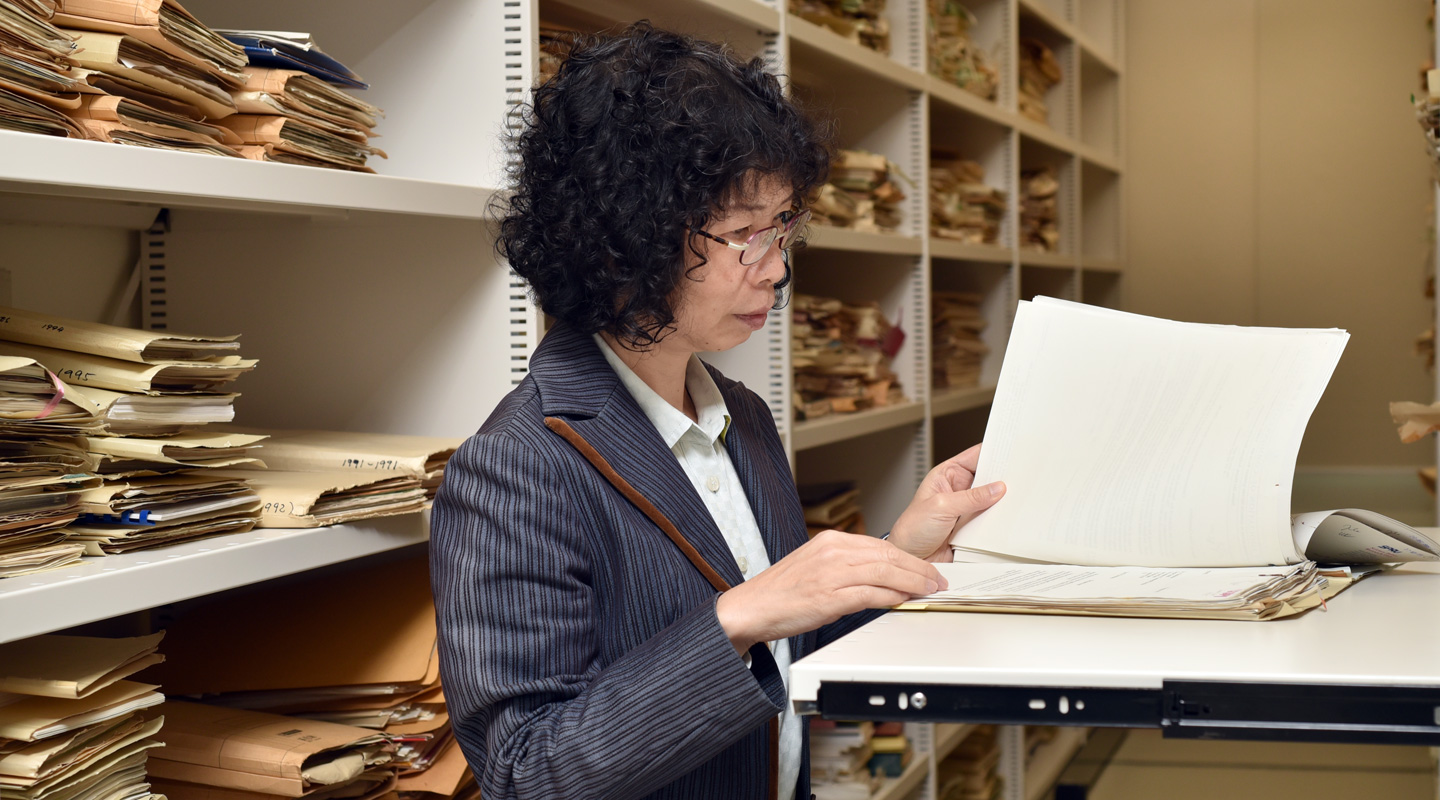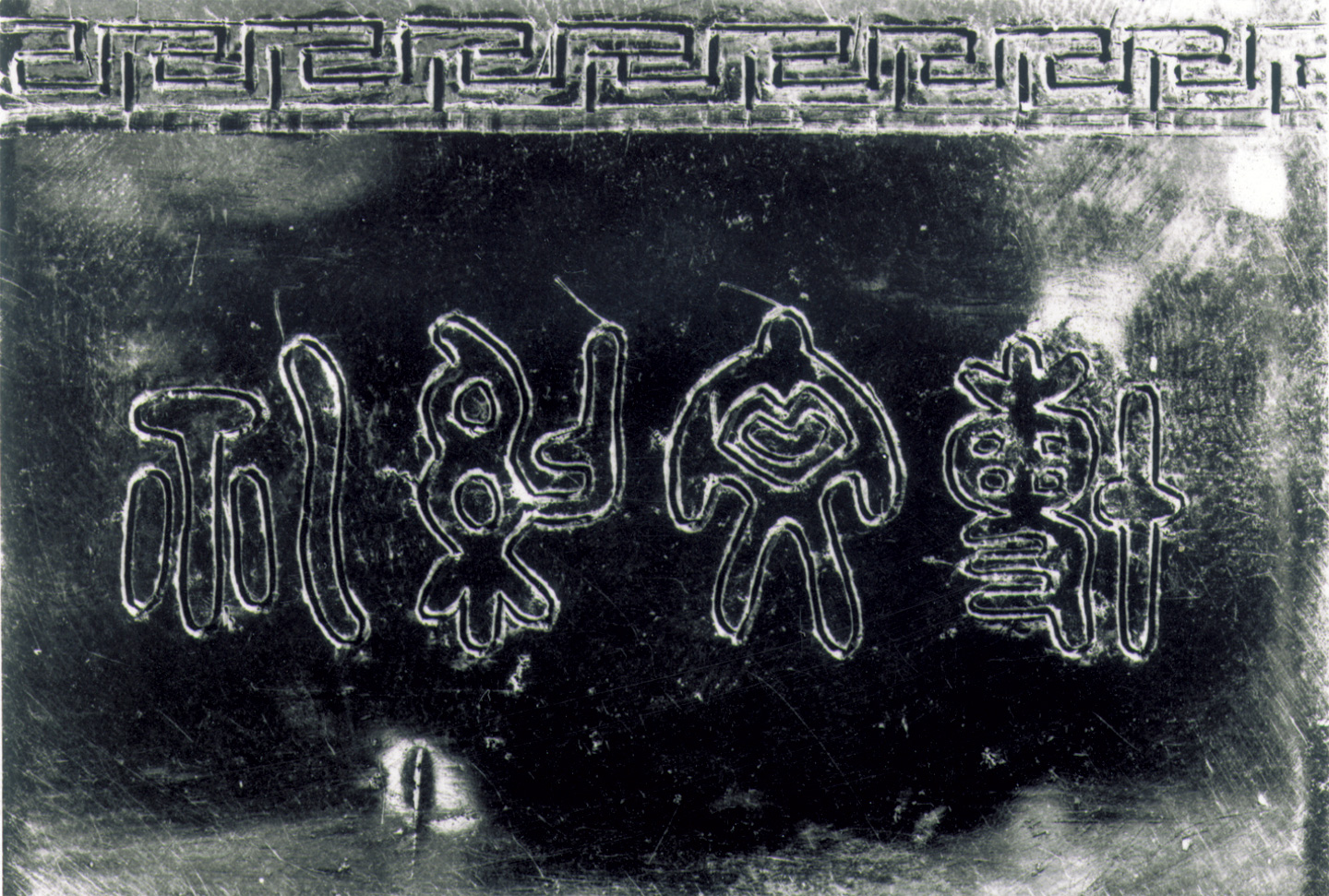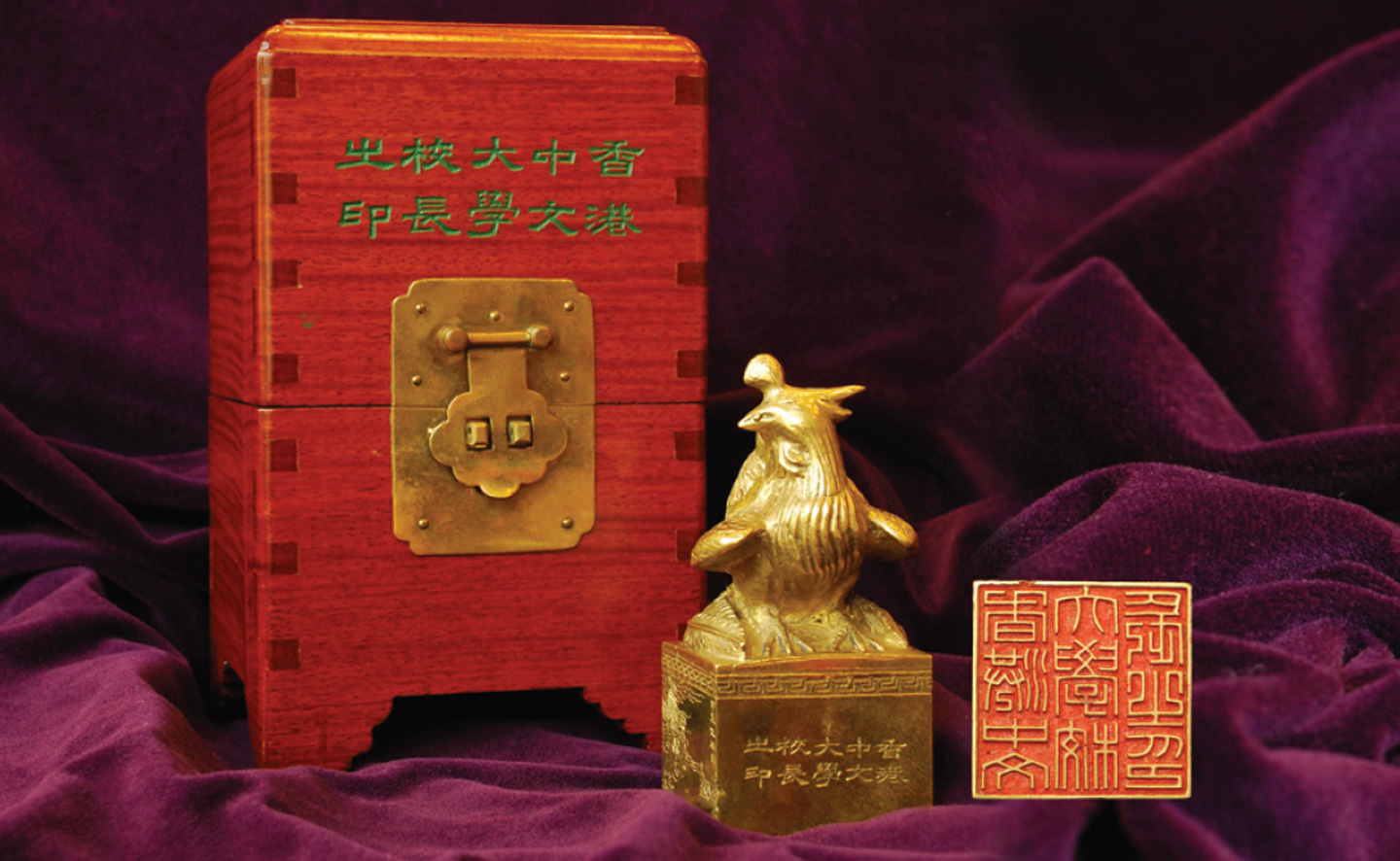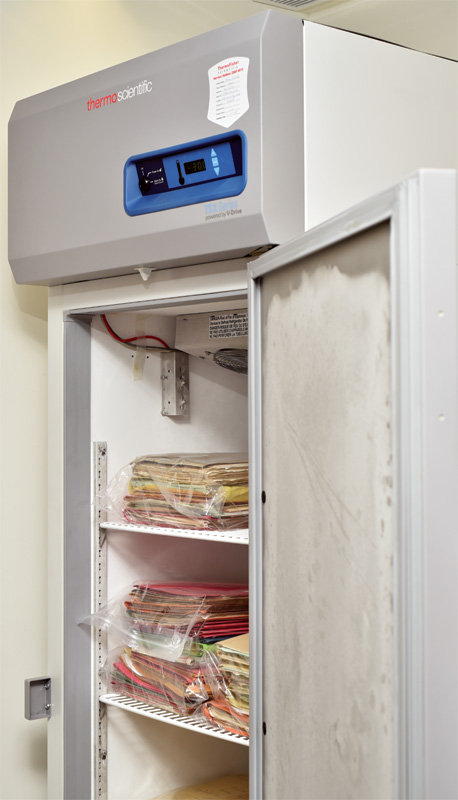Dear readers, With the launch of e-newsletter CUHK in Focus, CUHKUPDates has retired and this site will no longer be updated. To stay abreast of the University’s latest news, please go to https://focus.cuhk.edu.hk. Thank you.
University Archives: Guarding CUHK’s Best-Kept Secrets

Affiliation to an organization invariably evokes a sense of shared identity among its members, as is evident in the CUHK community. The University Archives, kept by the University Library, is tasked with the mission of keeping intact the contours of our shared past through collecting and preserving the University’s historical records.
Ms. Louise Jones, the University Librarian, said, ‘Although only 55 years old, CUHK has a rich and significant intellectual history, and has played an important part in the development of Hong Kong, touching many lives for the better. The Library was delighted when the University agreed to establish a University Archives team within the Library, and we appointed a University Archivist in 2015.’
The University Archives is more than a repository of inactive records and memorabilia, for its collections are given a new lease on life through conservation and research. Ms. Sintra Tsang, who is in charge of the Archives, gave us a quick walkthrough of its features, as well as some of the CUHK secrets kept there.
‘We aim to acquire records of historical value that reflect our teaching and learning initiatives, research, knowledge transfer activities, administration and alumni relations. The Archives is a platform where historical resources about the University are preserved for use by the greater CUHK community and public.
‘Some good examples of the records collected are meeting minutes, papers, reports, and internal as well as external correspondence. These records are especially important because they often reveal decision-making processes. However, our collection is not limited to documents; we also collect photos, publications, artefacts, audio-visual materials, etc.’

Ms. Tsang and her colleagues regularly visit Faculty and departmental offices to encourage staff to transfer records to the Archives that are no longer in active use. In addition, the Archives also purchases records from external sources, such as The National Archives (TNA) of the UK. As a former British colony, records relating to Hong Kong’s colonial past can be found in TNA.
The files from TNA offer a fascinating glimpse of the tertiary education of Hong Kong during the 1950s and 1960s, and in particular the preparatory work relating to the establishment of CUHK.
Ms. Tsang said, ‘The then Inter-University Council for Higher Education Overseas of the UK, responsible for education affairs in British colonies, had its files kept in TNA. Of the many files belonging to the Council, about 30 are related to CUHK. They touch on a wide range of issues, including the setting up of the constituent Colleges and the selection of the Vice-Chancellor.’ These files have been digitized and can be viewed on campus from the Library’s website.
A precious asset of CUHK, the Archives also proves valuable to members of the wider public and the academic community. For example, photos of Professor Sir Charles Kao, CUHK’s third Vice-Chancellor and Nobel Laureate, are now on loan to the Hong Kong Heritage Museum for display at the exhibition titled ‘The Hong Kong Jockey Club Series: A History of the World in 100 Objects from the British Museum’. In fact, Lady Kao donated to the Archives more than 100 items originally belonging to Professor Kao, including photos, slides, medals, awards and certificates.

The Archives is a treasure trove for CUHK’s best-kept secrets. The four Chinese characters constituting the motto of CUHK, Bo Wen Yue Li, as well as the Vice-Chancellor’s seal and the wooden box set, were designed by the late Mr. Chao Ho-ch’in, whose proposal to the University regarding the seal and box is retained by the Archives. Replicas of the seal and the box are now on display at the University Gallery inside the Main Library.
Another item worth mentioning is the set of documents related to the widely-used Lin Yutang’s Chinese-English Dictionary of Modern Usage, published by the Chinese University Press in 1972. The dictionary project lasted seven years and attracted financial support from various donors, including Swire Shipping and Hysan Development Company Limited.
The collection of the University Archives also boasts a set of campus maps, extracted from the CUHK Calendar from 1967 through 2006, that portray the development of the University through the years. The maps show how a multitude of Colleges and administrative offices, originally located on various spots in the territory, eventually came to be sited on the Shatin campus.
Besides print publications, the Archives also actively collects and preserves digital publications, such as e-newsletters. The preservation challenges of print publications and born-digital publications are, however, completely different.
‘For instance, the manual for course selection, which used to be a print publication, became an online version around 10 years ago. Such manuals tell us a lot about curriculum design and development. It remains imperative that we exercise care to explore and pursue the best way to preserve them.’
The Archives not only provides a record of CUHK’s past, but also actively reaches out to the community. Ms. Tsang was invited to deliver a talk on the history of CUHK in a secondary school in Shatin in 2018 as part of the Shatin Festival. The Archives also participated in the International Archives Day 2018, when records concerning the early days of the University were put on display.
‘CUHK has always been an integral part of the education and history of Hong Kong. We want to tell people what the past of the University was like, so that they can connect the past and present. During community outreach activities, we very often come across our alumni, most of whom are thrilled to find that their alma mater has established its own archive office.’
History provides a sense of anchorage, which we need when venturing into the uncertain future. With a good knowledge of our past, we will not lose sight of what CUHK set out to achieve when it was first established, and will be able to move forward with even surer steps and greater determination.
Eliza Chan

First Aid for Incoming Records
Acquired materials must be treated before they are fit for permanent retention. For instance, staples, if any, are removed using specially designed levers. Brass clips are then used to hold the document together, in place of stapling. Photos should be placed in acid-free photo sleeves, and incoming publications and documents are sanitized by freezing at –30˚C for at least three days. Treated documents are then placed in archival boxes. The storage of the Archives is strictly controlled for temperature and humidity, and is equipped with an FM 200 fire suppression system.
Filed but not Closed
Scholars in Hong Kong and elsewhere can use the materials offered by the Archives for research projects. Researchers on the development of CUHK or on higher education in Hong Kong are welcome to browse the Library’s digital collection or send questions to the Archives by e-mail. Upon request, the Archives will identify the relevant records that may be helpful to their research.
This article was originally published in No. 541, Newsletter in Aug 2019.